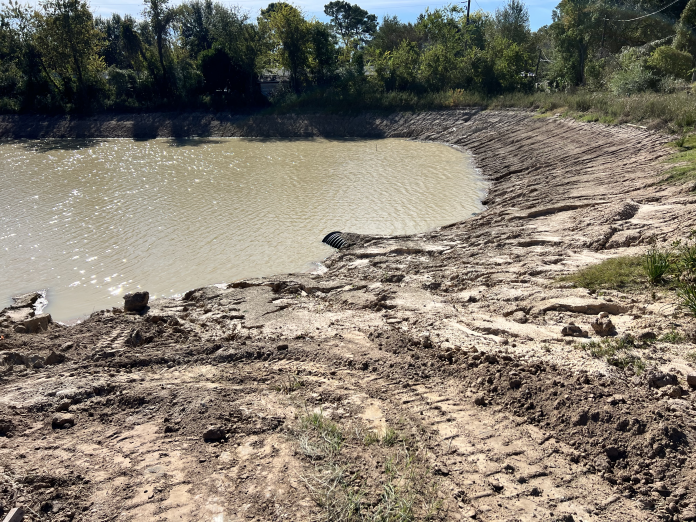A dry pond, also known as a detention pond or dry detention basin, is a stormwater management facility designed to temporarily store and then slowly release runoff. Unlike wet ponds, dry ponds don’t have a permanent pool of water; they are typically dry between rain events. They are used to control the rate at which stormwater flows downstream, preventing flooding and allowing sediment and pollutants to settle out.
Here’s a more detailed explanation:
Purpose and Function:
Stormwater Management:
. Dry ponds are primarily designed to manage stormwater runoff from rainfall events.
Peak Flow Reduction:
. They temporarily store water and release it at a controlled rate, reducing the peak flow of stormwater and preventing downstream flooding.
Pollutant Removal:
. While not as effective as wet ponds, dry ponds can still trap some sediment and pollutants, improving water quality.
Flood Control:
. By managing the flow of water, dry ponds help protect against flooding in urban and suburban areas.
Groundwater Recharge:
. In some cases, dry ponds can also contribute to groundwater recharge as water infiltrates through the pond bottom during dry periods.
Aesthetics:
. Dry ponds can be incorporated into green spaces, providing recreational opportunities and enhancing the landscape.
Key Characteristics:
No permanent water pool: Unlike wet ponds, dry ponds are designed to drain completely between storm events.
Outlet Control: They have a controlled outlet structure (like an orifice) that regulates the rate of water release.
Gravel or vegetated bottom: Dry ponds often have a gravel or vegetated bottom that allows for infiltration and drainage.
Location and Size: They are typically located in areas where stormwater runoff can be easily directed to them, and their size is determined by the drainage area and desired storage volume.
Maintenance:
Regular inspection: Dry ponds should be inspected regularly for debris, erosion, and any signs of damage to the outlet structure.
Sediment removal: Accumulated sediment may need to be removed periodically to maintain the pond’s capacity and function.
Vegetation management: The vegetation in and around the pond may need to be maintained, including mowing and replanting if necessary.


